2006 Yamaha Stratoliner Review
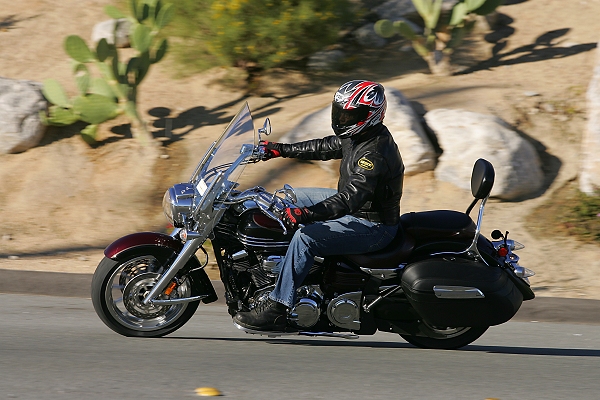
When we announced the creation of the Star brand by Yamaha on May 13, 2005, and disclosed its first new models, the Roadliner and Stratoliner (on June 12, 2005), we were still trying to absorb what Yamaha was doing.
Our October 5, 2005 ride review of the 2006 Star Roadliner offers Neale Baily's impressions of the new 1854cc air-cooled, pushrod v-twin powered cruiser that Star has introduced as the signature model for its new brand image. While the technical details of the Roadliner and Stratoliner are virtually identical, and can be gleaned from Neale's article (the Stratoliner is the touring version, with bags, a windshield and a bit more spring preload in the rear to support passengers and/or luggage), my ride on the Stratoliner gave MD another opportunity to explore the performance and personality of Star's flagship.
The curious thing Star has tried to do with both the Roadliner and the Stratoliner is combine the typical cruiser, retro concept with modernism. The approach Star took was to look at a 1930s design trend for industrial products including automobiles and even railroad locomotives. The streamlined look of some of the art deco designs was not based on scientific, wind-tunnel tested shapes, but rather on emotion and the desire to evoke an onlooker's sense that the object was "rushing through the wind even while standing still". From Star's perspective, these designs continue to express "a buoyant mood and irrepressible optimism for the future."
If you think about it, the idea of designing a retro cruiser with the art deco "optimism for the future" (albeit, a 1930's future) seems to bring to motorcycles one of the most successful design themes employed with hot rod automobiles. True to the cruiser roots, Star nevertheless wants to be known as the brand that pushes cruiser design and performance to a new level, while maintaining the look and feel of an earlier era. The aluminum frame, fantastic brakes (more about that later) and hugely powerful engine that somehow manages to survive on pump gas with a 9.5 to 1 compression ratio in a pushrod, air cooled package, deliver on Yamaha's promise of superior performance in an otherwise traditional package.
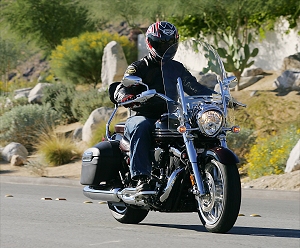
By sticking to the air cooled, pushrod format for its engine, Star has not only made its customers happy (according to Yamaha's surveys, those customers want "traditional" engine design), it has managed to bring horsepower and torque levels up to the level established by the best of its liquid-cooled competition.
It is the clever engineering that is not seen by the naked eye that accomplishes this for Star. The black aluminum frame (which could just as easily pass for steel to the observer) is one example. The engine internals are the best example. See Neale's discussion for all the details, but note the fuel injection and cleverly designed, large air box, which work together with a modern down-draft intake path to the huge, well-designed cylinder head. The result is that the solidly mounted engine (with just the right amount of vibration balancing built in) has superb throttle response, huge torque right off idle, and a broad power band. Try as I might, I could not find fault with the power delivery of the Stratoliner, which felt both effortless and effort-full, depending on the attitude of my right wrist.
With a claimed 101 horsepower and 124 pound feet of torque at the crank, it is hard to imagine the Stratoliner ever straining under the load of a passenger or luggage, no matter how heavy. Passing power was always plentiful, and Yamaha's claim that this machine out-accelerated Honda's VTX1800 and Kawasaki's Vulcan 2000 seems credible after a long day in the saddle.
Handling is every bit as impressive. To speak of this motorcycle and to use the term "light weight", seems absurd, but, relatively speaking, this is a light weight design. With an aluminum frame and a unique-to-the-cruiser class aluminum swingarm, the Stratoliner is more than 50 pounds lighter than a Vulcan 2000, for instance. Lifting the Stratoliner off its side stand drove home the point that this bike not only saves a few pounds here and there, but carries its weight low. Riding the bike at low speed is less intimidating than on some other mega-cruisers, and the handling at speed is both predictable and confidence inspiring. I would even use the term "quick" to describe the Stratoliner's handling for the mega-cruiser class. Impressive.
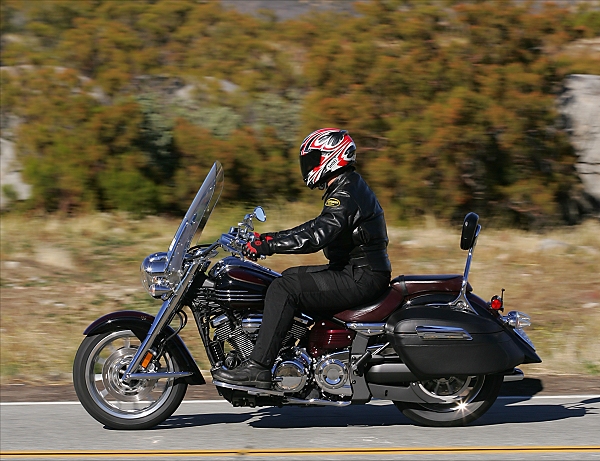
But the Stratoliner, like the Roadliner and their competitors, is really about those subjective intangibles, like style, "feel", presence, and even "lifestyle". These things will determine the success or failure of the Star brand and its flagship models.
You have to acknowledge that Yamaha has these intangibles firmly in its sights, with a track record of developing a large, loyal "family" of Star motorcycle owners with its earlier models. Sticking with the air-cooled "traditional" engineering, dialing in just the right amount of engine feel, combining customer-pleasing styling with modern, dependable performance, all factor in here, but Star clearly appears on the right track from our perspective.
Star has also recognized more than most of its competitors that customization is at the core of the customer experience with cruisers. As a result, Star offers a huge number of its own accessories (take a look at the Star accessory web site here), and already has dozens of accessories available for the brand new Stratoliner and Roadliner.
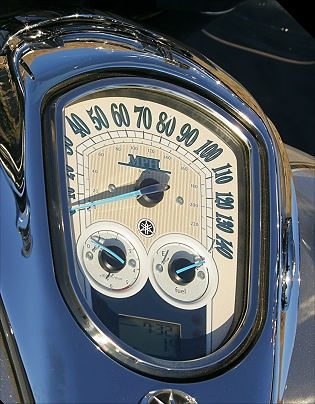
By the way, the unique features to the Stratoliner, including the saddlebags and the windscreen, resulted in vastly different impressions from my perspective. While the saddlebags are certainly functional and well designed, the windscreen, despite Star's efforts, resulted in severe buffeting at the head and shoulders anywhere above 70 mph. At 5'10" tall, with short legs and a long torso, my experience may not be that of other readers, but the taller windscreen affixed to my test model made high speed freeway cruising unpleasant. Star offers a shorter screen, and a quick-detach feature to remove the screen altogether. Looking back, I should have sampled the bike without its screen attached, although the "wind in face" experience aboard a cruiser is already all too familiar to me, and not really part of the touring experience.
About those brakes. This motorcycle possesses the best brakes I have yet experienced on a cruiser-class motorcycle in terms of both feel and power. The four-piston front calipers grip 298mm rotors fiercly, but predictably.
The design details on the Stratoliner (and the Roadliner for that matter) are impressive. Although Neale discussed many of them, you need to take a look at the photo of the instrumentation in this article. If you are a fan of classically designed Swiss watches, you might appreciate the subtle, quality look Star has given to the instruments on these bikes. The rest of the bike features design elements just as impressive.
In the end, the Stratoliner impresses us both with its performance and its styling. It seems destined to build on the success Yamaha established with its earlier Star models.
For additional details, pricing and specifications, take a look at the Star Motorcycles web site here.
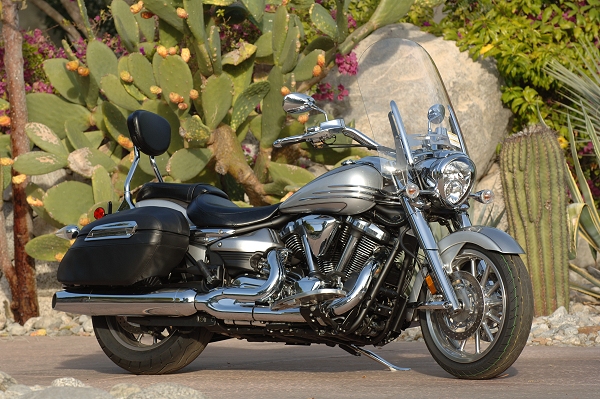
You can follow any responses to this entry through the RSS 2.0 feed. Both comments and pings are currently closed.
2006 Yamaha Stratoliner Review
Source: https://www.motorcycledaily.com/2005/12/13december05_yamaha_starmotorcycles/

Tidak ada komentar: